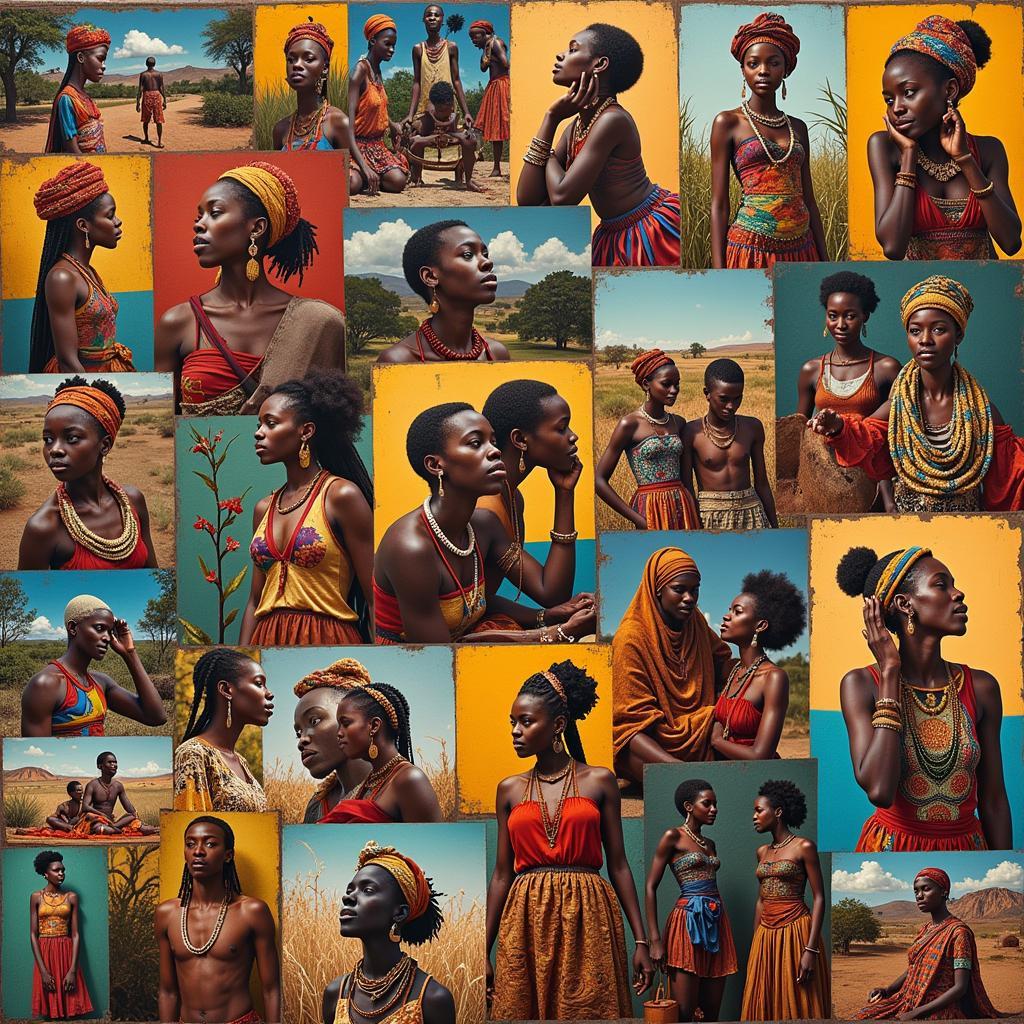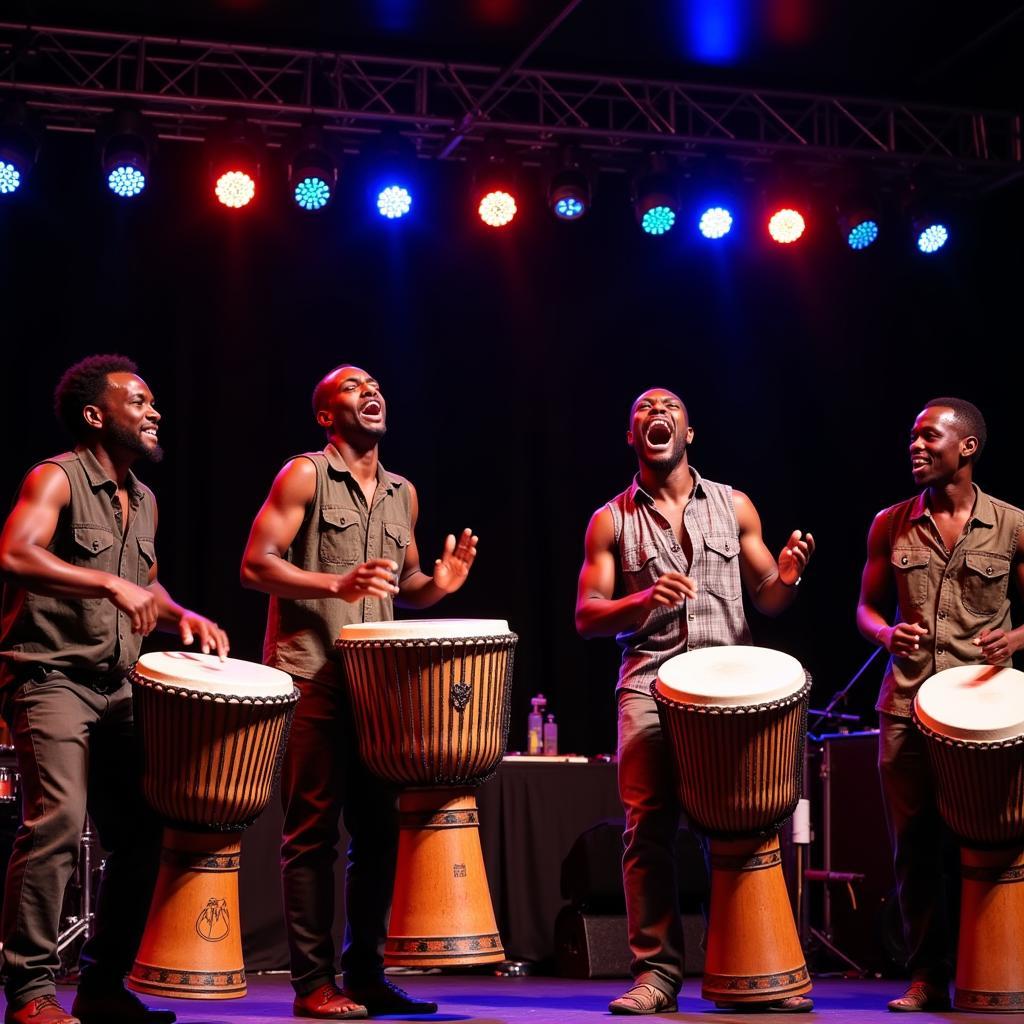Exploring the Vibrant World of African Embroidery
African embroidery is more than just needle and thread; it’s a vibrant tapestry of cultural stories, historical narratives, and artistic expression. From the intricate patterns of North Africa to the bold designs of the southern regions, this ancient craft showcases the diversity and richness of the African continent. Discover the captivating world of African embroidery, its unique techniques, and its significance in various cultures.
A Journey Through African Embroidery Styles
African embroidery, with its diverse styles and techniques, offers a fascinating glimpse into the continent’s rich heritage. Each region boasts its unique approach, reflecting local traditions, beliefs, and artistic sensibilities. North African embroidery, for example, often features intricate geometric patterns and the use of silk and metallic threads, reflecting the region’s historical connections to trade and cultural exchange. Moving south, we encounter a different aesthetic. Southern African embroidery is characterized by bold, graphic designs, often depicting animals, plants, and abstract symbols, reflecting a close connection to nature and ancestral spirits. These distinct styles not only showcase the diversity of African art but also serve as a powerful medium for storytelling and cultural preservation.
The Significance of Symbols in African Embroidery
Many African embroidery designs incorporate symbolic imagery, each carrying a specific meaning within its cultural context. For instance, the spiral, a common motif, often represents growth, continuity, and the cyclical nature of life. Animals, too, play a significant role, with lions symbolizing strength and leadership, and birds representing freedom and spirituality. african faces wall hanging These symbols add another layer of depth to African embroidery, transforming it from mere decoration into a powerful form of visual communication.
Techniques and Materials: A Closer Look at African Embroidery
African embroidery employs a variety of techniques, from simple running stitches to more complex methods like chain stitch and couching. The choice of materials also varies depending on the region and cultural traditions. While some communities favor cotton or linen threads, others utilize materials like raffia, wool, or even beads and shells, adding texture and dimension to their work.
From Traditional Garments to Contemporary Art: The Evolution of African Embroidery
Historically, African embroidery was primarily used to adorn clothing and household items, marking social status, celebrating important events, and expressing personal identity. Today, while these traditions continue, African embroidery is also finding its place in the contemporary art world, with artists pushing the boundaries of the craft and exploring new forms of expression. african embroidery designs borer This evolution highlights the adaptability and enduring appeal of African embroidery.
Preserving and Promoting African Embroidery for Future Generations
Preserving traditional African embroidery techniques is crucial for safeguarding the continent’s cultural heritage. Many organizations and individuals are working to support artisans, promote their work, and ensure that these skills are passed on to future generations.
How can I learn more about African embroidery?
There are numerous resources available to learn more about African embroidery, including books, online tutorials, and museum exhibitions. Engaging with these resources can provide a deeper understanding of this rich and diverse art form.
Conclusion: The Enduring Legacy of African Embroidery
African embroidery stands as a testament to the creativity, resilience, and cultural richness of the African people. From its intricate designs to its symbolic meanings, this ancient craft continues to captivate and inspire. By exploring and appreciating African embroidery, we gain a deeper understanding of the continent’s diverse cultures and artistic traditions.
FAQ
- What are some common motifs in African embroidery? Common motifs include spirals, animals, geometric patterns, and plants.
- What materials are used in African embroidery? Materials vary but can include cotton, linen, raffia, wool, beads, and shells.
- Where can I find authentic African embroidery? You can find authentic African embroidery at craft markets, online stores specializing in fair trade, and museum shops.
- How can I support African embroidery artisans? Purchase their work directly, donate to organizations supporting their craft, and spread awareness about their art.
- What is the significance of African embroidery? It serves as a powerful form of visual communication, storytelling, and cultural preservation.
- What are some of the different regional styles of African embroidery? North African embroidery often features intricate geometric patterns, while Southern African embroidery is known for its bold, graphic designs.
- Is African embroidery still practiced today? Yes, both in traditional forms and in contemporary art.
Need support? Contact us 24/7: Phone: +255768904061, Email: kaka.mag@gmail.com, or visit us in Mbarali DC Mawindi, Kangaga, Tanzania.



